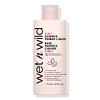What's inside
What's inside
 Key Ingredients
Key Ingredients

 Benefits
Benefits

 Concerns
Concerns

 Ingredients Side-by-side
Ingredients Side-by-side

Water
Skin ConditioningGalactomyces Ferment Filtrate
HumectantMethyl Gluceth-20
HumectantPropanediol
SolventButylene Glycol
HumectantVp/Va Copolymer
Rosa Damascena Flower Water
MaskingPhenoxyethanol
PreservativeSilica
AbrasiveSodium Acrylates Crosspolymer-2
AbsorbentEthylhexylglycerin
Skin ConditioningCarbomer
Emulsion StabilisingDisodium EDTA
Propylene Glycol
HumectantCalendula Officinalis Flower Extract
MaskingGlycerin
HumectantSodium Hydroxide
BufferingLeuconostoc Ferment Filtrate
AntimicrobialPortulaca Oleracea Extract
Skin ConditioningLaurtrimonium Chloride
Emulsifying1,2-Hexanediol
Skin ConditioningBeta-Glucan
Skin ConditioningEthyl Acetate
PerfumingAcrylic Acid
Water, Galactomyces Ferment Filtrate, Methyl Gluceth-20, Propanediol, Butylene Glycol, Vp/Va Copolymer, Rosa Damascena Flower Water, Phenoxyethanol, Silica, Sodium Acrylates Crosspolymer-2, Ethylhexylglycerin, Carbomer, Disodium EDTA, Propylene Glycol, Calendula Officinalis Flower Extract, Glycerin, Sodium Hydroxide, Leuconostoc Ferment Filtrate, Portulaca Oleracea Extract, Laurtrimonium Chloride, 1,2-Hexanediol, Beta-Glucan, Ethyl Acetate, Acrylic Acid
Water
Skin ConditioningPropanediol
SolventDimethicone
EmollientIsopentyldiol
HumectantSodium Acrylates Crosspolymer-2
AbsorbentButylene Glycol
HumectantGlycerin
HumectantDimethicone/Vinyl Dimethicone Crosspolymer
Skin ConditioningEpilobium Fleischeri Extract
Skin ConditioningAgave Tequilana Leaf Extract
AstringentBarosma Betulina Leaf Extract
PerfumingTocopherol
AntioxidantCitric Acid
BufferingXanthan Gum
EmulsifyingCarbomer
Emulsion StabilisingDimethicone Crosspolymer
Emulsion StabilisingSilica
AbrasiveIsoceteth-10
EmulsifyingHydroxyacetophenone
AntioxidantCaprylyl Glycol
EmollientPotassium Sorbate
PreservativeWater, Propanediol, Dimethicone, Isopentyldiol, Sodium Acrylates Crosspolymer-2, Butylene Glycol, Glycerin, Dimethicone/Vinyl Dimethicone Crosspolymer, Epilobium Fleischeri Extract, Agave Tequilana Leaf Extract, Barosma Betulina Leaf Extract, Tocopherol, Citric Acid, Xanthan Gum, Carbomer, Dimethicone Crosspolymer, Silica, Isoceteth-10, Hydroxyacetophenone, Caprylyl Glycol, Potassium Sorbate
Ingredients Explained
These ingredients are found in both products.
Ingredients higher up in an ingredient list are typically present in a larger amount.
Butylene Glycol (or BG) is used within cosmetic products for a few different reasons:
Overall, Butylene Glycol is a safe and well-rounded ingredient that works well with other ingredients.
Though this ingredient works well with most skin types, some people with sensitive skin may experience a reaction such as allergic rashes, closed comedones, or itchiness.
Learn more about Butylene GlycolCarbomer is a polymer of acrylic acid. Its main role is to create a gel consistency.
A high amount of carbomer can cause pilling or balling up of products. Don't worry, most products contain 1% or less of carbomer.
Glycerin is already naturally found in your skin. It helps moisturize and protect your skin.
A study from 2016 found glycerin to be more effective as a humectant than AHAs and hyaluronic acid.
As a humectant, it helps the skin stay hydrated by pulling moisture to your skin. The low molecular weight of glycerin allows it to pull moisture into the deeper layers of your skin.
Hydrated skin improves your skin barrier; Your skin barrier helps protect against irritants and bacteria.
Glycerin has also been found to have antimicrobial and antiviral properties. Due to these properties, glycerin is often used in wound and burn treatments.
In cosmetics, glycerin is usually derived from plants such as soybean or palm. However, it can also be sourced from animals, such as tallow or animal fat.
This ingredient is organic, colorless, odorless, and non-toxic.
Glycerin is the name for this ingredient in American English. British English uses Glycerol/Glycerine.
Learn more about GlycerinPropanediol is an all-star ingredient. It softens, hydrates, and smooths the skin.
It’s often used to:
Propanediol is not likely to cause sensitivity and considered safe to use. It is derived from corn or petroleum with a clear color and no scent.
Learn more about PropanediolSilica, also known as silicon dioxide, is a naturally occurring mineral. It is used as a fine, spherical, and porous powder in cosmetics.
Though it has exfoliant properties, the function of silica varies depending on the product.
The unique structure of silica enhances the spreadability and adds smoothness, making it a great texture enhancer.
It is also used as an active carrier, emulsifier, and mattifier due to its ability to absorb excess oil.
In some products, tiny microneedles called spicules are made from silica or hydrolyzed sponge. When you rub them in, they lightly polish away dead skin layers and enhance the penetration of active ingredients.
Learn more about SilicaWe don't have a description for Sodium Acrylates Crosspolymer-2 yet.
Water. It's the most common cosmetic ingredient of all. You'll usually see it at the top of ingredient lists, meaning that it makes up the largest part of the product.
So why is it so popular? Water most often acts as a solvent - this means that it helps dissolve other ingredients into the formulation.
You'll also recognize water as that liquid we all need to stay alive. If you see this, drink a glass of water. Stay hydrated!
Learn more about Water